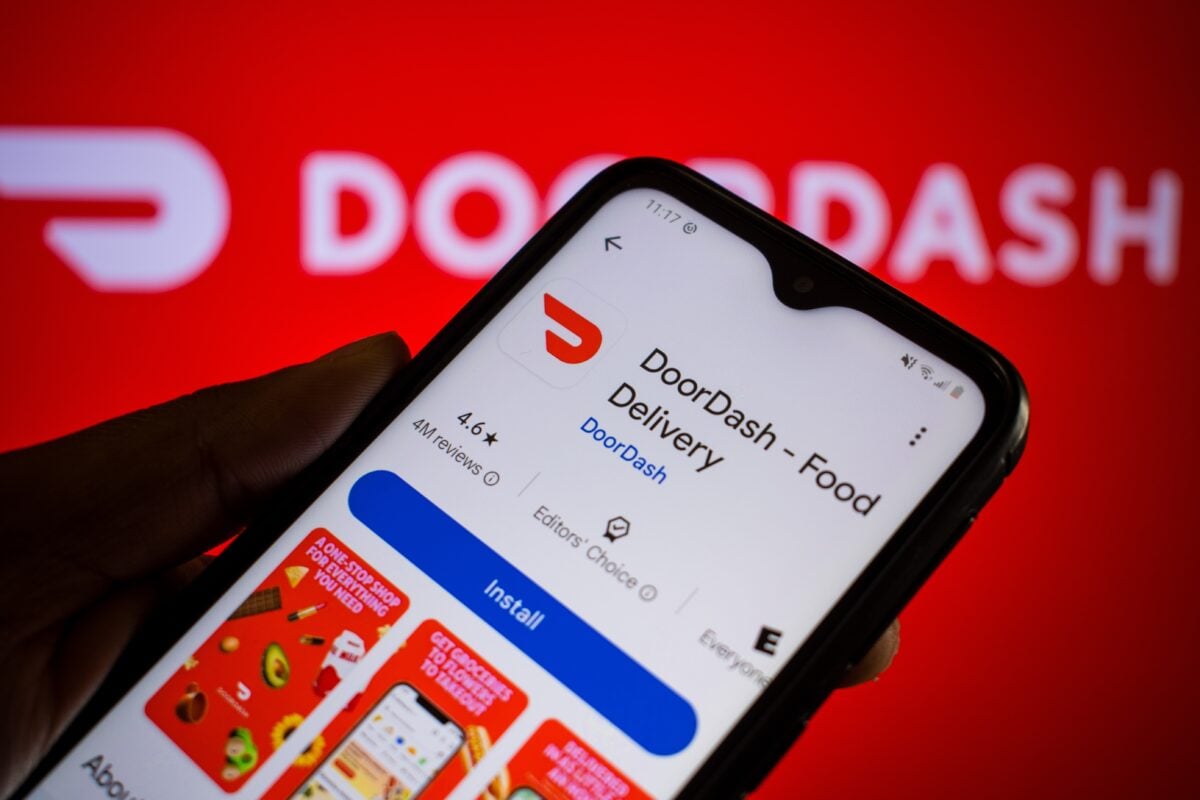TLDRs;
- DoorDash launches “Dot,” an autonomous electric robot, in Tempe and Mesa, Arizona, for neighborhood food deliveries.
- The robot is part of a new AI-driven platform that assigns deliveries to humans, drones, or robots.
- Strong Q2 results, $3.3 billion revenue and $285 million profit, support DoorDash’s investment in automation and robotics.
- The pilot program may expand to more cities, signaling a future where human and robotic couriers collaborate.
DoorDash has taken another step into the future of logistics with the introduction of “Dot,” an autonomous, all-electric delivery robot now rolling out in Arizona.
The pilot program, currently limited to Tempe and Mesa, is part of the company’s broader effort to integrate robotics and artificial intelligence into its vast delivery ecosystem.
The robot was built entirely in-house by DoorDash Labs, the company’s innovation arm. Designed for short-range neighborhood trips, Dot travels along sidewalks, bike lanes, driveways, and even local roads. Its mission: to make local deliveries faster, greener, and more efficient while complementing the work of human drivers.
Merging AI with logistics
Dot isn’t just a delivery robot, it’s part of a new autonomous delivery platform powered by artificial intelligence. This system intelligently matches orders with the most suitable delivery method, whether it’s a human driver, a robot like Dot, or even drones in the future.
By embedding automation into its network, DoorDash hopes to improve order fulfillment for merchants while offering customers a seamless delivery experience.
Importantly, the company has emphasized that its human delivery partners will remain central to the platform. Robots will only handle specific types of local trips, leaving the bulk of work to people.
Introducing Dot, your local delivery robot! pic.twitter.com/1lF1UZ7Ocd
— DoorDash (@DoorDash) September 30, 2025
Strong growth boosts innovation
The debut of Dot comes at a time when DoorDash is enjoying significant financial momentum. The company’s second-quarter results for 2025 showcased 25% year-over-year revenue growth, reaching approximately $3.3 billion. Orders climbed 20% to 761 million, while net income swung to $285 million from a $157 million loss a year prior.
These results sent DoorDash’s stock up 8% in after-hours trading, extending an already impressive 54% rally in 2025. The company’s market capitalization now sits at $109 billion, reflecting investor confidence in its long-term strategy.
By investing in robotics, DoorDash is signaling that it intends to use this momentum to secure its dominance in a food delivery industry projected to exceed $50 billion annually in the U.S. by year’s end.
Looking ahead to expansion
While Arizona is just the beginning, DoorDash has made clear that it intends to expand the Dot program to more cities in the future.As urban areas increasingly look for sustainable solutions to traffic congestion and carbon emissions, autonomous electric vehicles could become a critical piece of local infrastructure.
For now, the rollout remains limited, allowing the company to gather data, refine technology, and assess customer response. But given DoorDash’s commanding 68% share of the U.S. food delivery market, even small-scale adoption of autonomous delivery could ripple across the industry.






